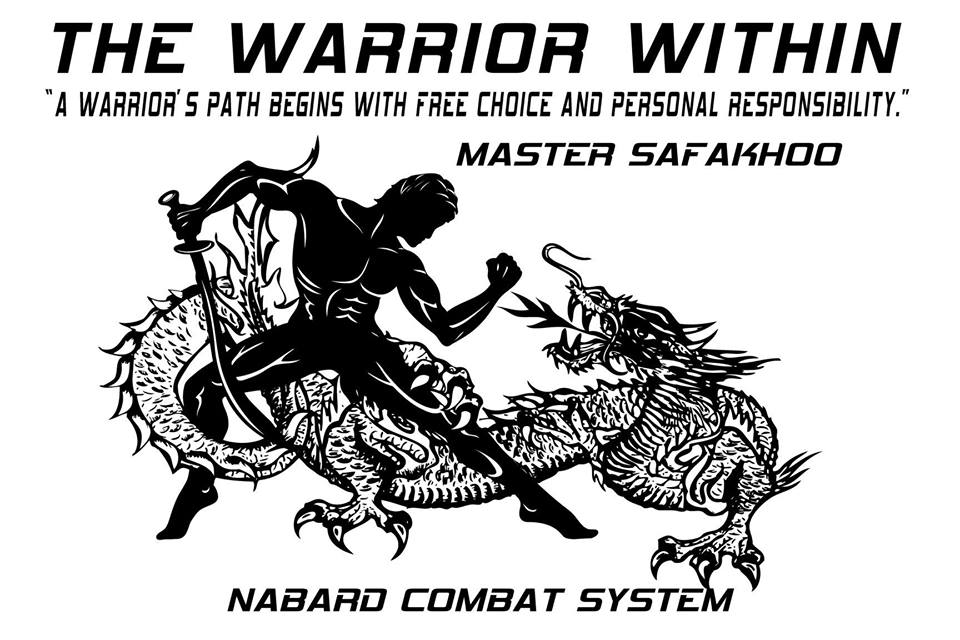
“One who seeks excellence in martial arts must not only have what it takes, but also the devotion of a Master willing to decipher the scientific template of the art rather than merely its movements.” – Master Safakhoo
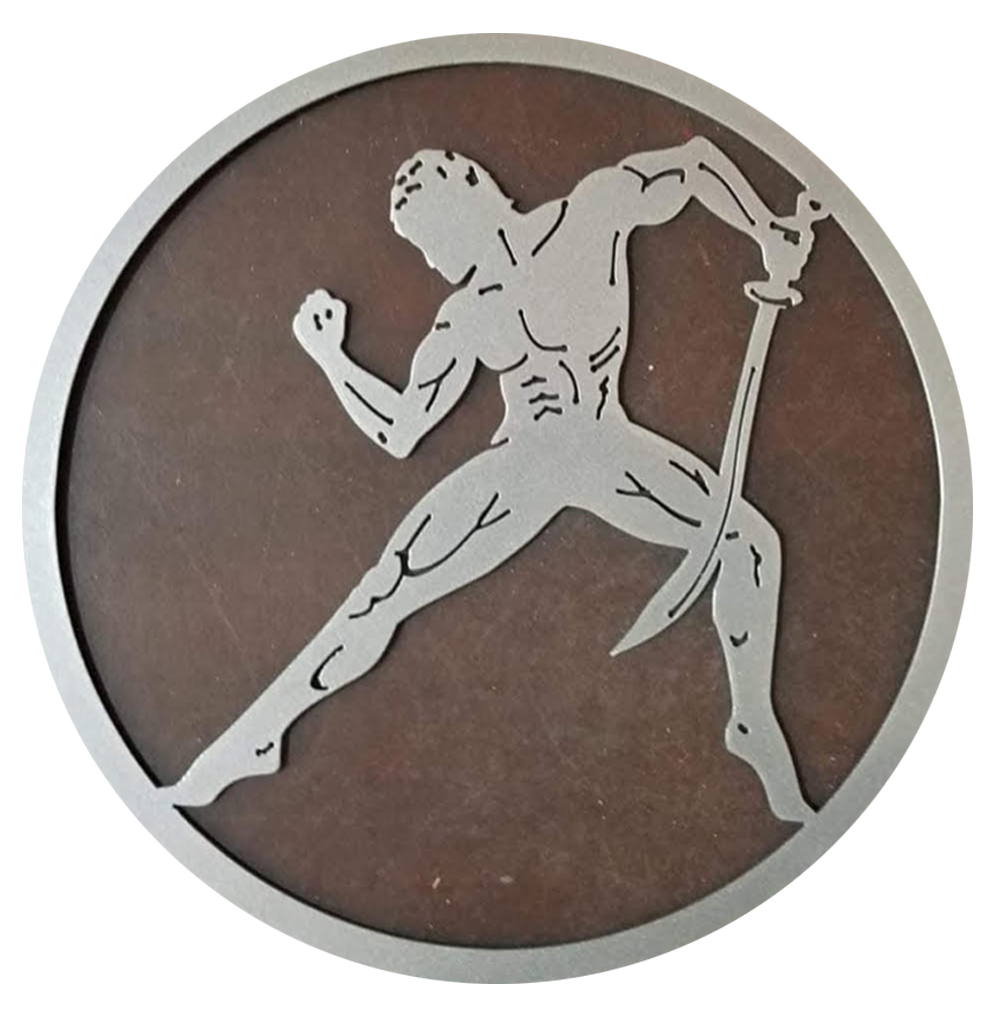
The History of Nabard System
Where the discipline of body becomes discipline of life
 The Nabard Combat System, pioneered by Grandmaster Safakhoo, embodies a holistic approach to martial arts training that transcends traditional boundaries. Rooted in the ancient Persian philosophy of combat, Nabard is more than just a collection of techniques; it is a comprehensive system designed to cultivate physical prowess, mental acuity, and spiritual resilience.
The Nabard Combat System, pioneered by Grandmaster Safakhoo, embodies a holistic approach to martial arts training that transcends traditional boundaries. Rooted in the ancient Persian philosophy of combat, Nabard is more than just a collection of techniques; it is a comprehensive system designed to cultivate physical prowess, mental acuity, and spiritual resilience.
At its core, the philosophy of Nabard revolves around adaptability, versatility, and creativity. Unlike rigid martial arts styles that adhere to strict forms and sequences, Nabard emphasizes fluidity and spontaneity in combat. Practitioners are trained to seamlessly adapt their techniques to the ever-changing dynamics of a confrontation, drawing upon a diverse repertoire of strikes, blocks, grabs, and throws.
Central to the Nabard philosophy is the concept of interchangeability. Techniques learned in isolation are recombined in myriad ways to suit the unique demands of each situation. This approach reflects the dynamic nature of combat, where improvisation and creativity often determine the outcome. By mastering the art of interchangeability, practitioners become adept at responding effectively to any threat, regardless of its nature or intensity.
Nabard also places a strong emphasis on biomechanics and body mechanics. Techniques are executed with precision and efficiency, maximizing the practitioner’s biomechanical advantage while minimizing wasted energy. Through rigorous training and practice, practitioners develop a keen understanding of their body’s capabilities and limitations, enabling them to perform with grace and power.
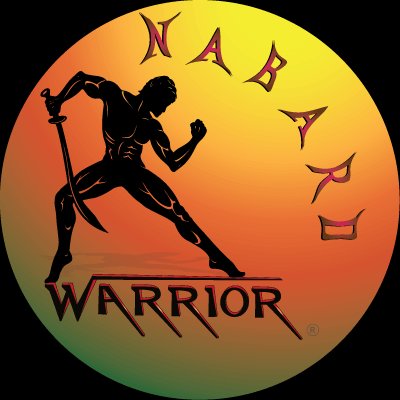 In addition to physical prowess, Nabard cultivates mental resilience and emotional fortitude. Practitioners are trained to remain calm and focused under pressure, maintaining clarity of thought and purpose even in the heat of battle. This mental discipline is essential for making split-second decisions and adapting to unforeseen challenges.
In addition to physical prowess, Nabard cultivates mental resilience and emotional fortitude. Practitioners are trained to remain calm and focused under pressure, maintaining clarity of thought and purpose even in the heat of battle. This mental discipline is essential for making split-second decisions and adapting to unforeseen challenges.
Nabard embodies Master Safakhoo’s holistic approach to martial arts training, grounded in the belief that true combat proficiency can only be achieved through rigorous and realistic engagement. Central to his philosophy is the conviction that sparring serves as the ultimate crucible for honing combat skills, offering practitioners an opportunity to test their techniques against live opponents under dynamic conditions. Safakhoo adamantly asserts that any martial art lacki
ng sparring is akin to a choreographed dance, devoid of the essential element of practical application. Moreover, he advocates for minimal rules in sparring, arguing that excessive regulations detract from the authenticity of the training experience and hinder practitioners from developing effective self-defense strategies. Safakhoo eschews the conventional emphasis on points, belts, and trophies, viewing them as mere distractions that detract from the essence of martial arts training. Instead, he emphasizes the importance of cultivating a warrior mindset focused on continuous improvement and real-world applicability.
According to Safakhoo, the true distinction between martial arts lies in their sparring systems, which go beyond surface-level technique differences to cultivate adaptable, versatile fighters capable of navigating a wide array of combat situations.
By prioritizing unencumbered, realistic sparring, Safakhoo empowers practitioners to transcend the limitations of rote memorization and embrace the fluidity and unpredictability of real-world combat.
Beyond the physical and mental aspects, Nabard fosters a sense of spiritual growth and self-discovery. Practitioners are encouraged to explore the deeper dimensions of martial arts, cultivating virtues such as humility, integrity, and compassion. Through the practice of Nabard, individuals embark on a journey of self-realization, uncovering hidden strengths and overcoming personal limitations.
In essence, the Nabard Combat System is more than just a means of self-defense; it is a way of life. Grounded in ancient wisdom yet forward-thinking in its approach, Nabard offers practitioners a path to holistic development and empowerment. By embracing the principles of adaptability, versatility, and creativity, individuals can unlock their full potential and navigate life’s challenges with courage, resilience, and grace.
THE pERSIAN aRT OF cOM
BAT
Master Safakhoo’s creation of Nabard Combat System was deeply influenced by the philosophical underpinnings of Persian culture, which imbued his martial art with a unique perspective and approach. Several aspects of Persian culture’s philosophy played a significant role in shaping Safakhoo’s vision for Nabard.
Persian culture emphasizes the importance of adaptability in the face of challenges and change, a philosophy evident in Nabard’s core principles prioritizing fluidity and versatility in combat. Safakhoo designed Nabard to be adaptable to various combat scenarios, allowing practitioners to seamlessly transition between different techniques based on the demands of the situation.
Additionally, Persian culture values ingenuity and creative problem-solving as essential traits, which Safakhoo reflected in his innovative approach to martial arts. He devised novel training methods and techniques to address the complexities of combat, encouraging practitioners to think creatively and adapt their strategies effectively. Despite his innovative contributions, Safakhoo maintained a deep respect for Persian martial traditions and heritage, drawing inspiration from ancient strategies and integrating them into Nabard’s teachings. This ensured that the art remained rooted in its cultural heritage while embracing modern advancements. Moreover, Persian culture places great emphasis on achieving harmony and balance in all aspects of life, a philosophy Safakhoo incorporated into Nabard’s training regimen. He emphasized balanced physical development, mental focus, and spiritual well-being, seeking to cultivate harmony between body, mind, and spirit for holistic growth and self-improvement.
Finally, Persian culture is renown
ed for its rich philosophical traditions, exploring profound questions about existence and morality. Safakhoo infused Nabard with philosophical depth, encouraging practitioners to contemplate deeper principles underlying martial arts practice. Through Nabard, Safakhoo sought to impart not only physical skills but also philosophical insights enriching practitioners’ lives beyond combat. In summary, Master Safakhoo’s creation of Nabard Combat System reflects the philosophical values of Persian culture, emphasizing adaptability, creativity, respect for tradition, harmony, and philosophical depth, embodying the timeless wisdom of Persian philosophy.
Biography of Grandmaster Safakhoo
Grandmaster Safakhoo is a revered figure in the world of martial arts, renowned for his innovative contributions to combat training and fitness. Born with an innate passion for martial arts and a relentless pursuit of excellence, Safakhoo’s journey from a young practitioner to a distinguished Grandmaster is a testament to his unwavering dedication and pioneering spirit.
Early Life and Education:
Safakhoo’s journey into the world of martial arts began at a young age, driven by an inherent curiosity and fascination with combat techniques. Growing up, he attended martial arts schools where he honed his skills and immersed himself in various disciplines. However, Safakhoo’s quest for knowledge extended beyond mere physical training; he harbored a deep interest in the historical and philosophical aspects of martial arts practices.
As Safakhoo’s education progressed, so did his exploration of different martial art forms and their underlying principles. With an analytical approach, he delved into the fighting skills of diverse cultures, seeking to unravel the intricacies of combat beyond its surface movements. This relentless pursuit of understanding laid the foundation for Safakhoo’s future endeavors and shaped his unique perspective on martial arts.
Introduction of Nabard:
In 1983, Safakhoo introduced his revolutionary martial art system, Nabard, to the United States, marking a significant milestone in his career. Nabard, derived from the ancient Persian word for combat, represented more than just a martial art; it embodied Safakhoo’s profound insights into the science of combat and his innovative approach to training.
Philosophy of Nabard:
At the core of Nabard lies the fundamental principle of adaptability. Safakhoo recognized the dynamic nature of combat and the need for practitioners to be versatile and fluid in their techniques. Inspired by biomechanics, Safakhoo developed a martial art system characterized by interchangeability, where strikes could seamlessly transition into blocks, blocks into grabs, and grabs into throws. This adaptability, coupled with Safakhoo’s emphasis on creativity and effectiveness, set Nabard apart as a truly versatile and comprehensive combat system.
Legacy and Impact:
Throughout his illustrious career, Grandmaster Safakhoo has left an indelible mark on the world of martial arts and fitness. His dedication to deciphering the science of combat, coupled with his innovative approach to training, has inspired countless practitioners and fitness enthusiasts worldwide. Safakhoo’s legacy lives on through Nabard, a martial art system that continues to evolve and adapt to the ever-changing demands of combat.
As a true visionary and pioneer, Grandmaster Safakhoo’s contributions to martial arts and fitness will endure for generations to come, serving as a beacon of inspiration for all who seek to explore the boundless potential of the human body and mind.
historical roots of nabard
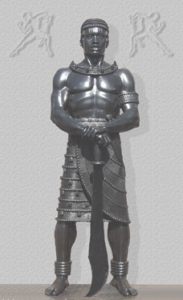
It would be a disservice to the evolution of martial practices for the Middle Eastern predecessors to not be acknowledged for their valuable contributions. The Middle East is rich in martial practices and concepts, some of which are being developed and refined in the 21st century. For example, the Israeli, Imre Lichtenfeld, began to develop the National System of Defensive Tactics known as “Krav Ma Ga” in the 1930’s and 1940’s. Likewise, the Persians have claim a notable fighting practice known as “Nabard,” an exotic art of combat. The word ‘nabard’ has a history all its own. ‘Nabard’ (loosely translated as ‘combat’) was the term originally used to refer to traditional Persian martial practice. Elements of traditional martial practice are still exhibited in an expressive fighting dance performed in suburbs throughout Persia. By applying the principals of this tradition to a strategy of survival, Safakhoo designed a martial art system which, in deference to its cultural heritage, he has named “Nabard.”
A notable and influence on Nabard is the Persian sport Varzesh-e Pahlavani (meaning the “Sport of the Heroes”), also known as Varzesh-e Bastani (meaning the “Sport of the Ancients”), is a Persian traditional discipline of gymnastics and wrestling, which was originally an academy of physical training for military purposes. Varzesh-e Pahlavani combines elements of the Persian culture with the spirituality of Sufism. Participants are expected to be pure, truthful, good tempered, and strong in body. The principles of humility are exemplified by a verse recited at many meetings: “Learn modesty, if you desire knowledge.”
The main part of a Varzesh-e Pahlavani session is dedicated to gymnastics or calisthenics, using a pair of wooden clubs (mil), metal shields (sang), and bow-shaped iron weights (‘kaman). The exercises also involve acrobatics like Sufi whirling and juggling. The session ends with submission wrestling known as the “Koshti Pahlavani”.
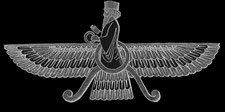
Though similar to Varzesh-e Pahlavani in body and strength conditioning techniques as well as Zoroastrianism in principles and philosophy, Nabard is designed as a war strategy. Nabard seeks to maximize the human body’s potential to move around an opponent, to identify defensive weakness and offensive opportunities in all spatial dimensions, rather than linearly. Techniques are taught as being interchangeable, for example blocks are performed so that they can be efficiently transformed into grabs or punches. Nabard emphasizes reaction and transitions between techniques so that after a dodge or a block, one may respond to an attack in any direction. Safakhoo developed these strategies in such a way that they showcase the adaptability of the human body and fighting techniques.
That the martial arts are continuing to develop exhibits their lasting relevance and the possibility of further refining martial strategies. As the Israeli government was able to develop and refine martial practices from varied backgrounds, Nabard, too, is a fo
rerunner in the advancement and refinement of martial arts. With roots in native traditions, Nabard is enriched by its traditional Persian roots, such as the fighting dances performed in Persian villages, and has become modern and effective fighting system.
The quest for effective self-defense reaches into the far recesses of time, as far into history as humans have been on earth. Historians agree the beginnings of the civilized world and of science, art, literature and medicine existed in their infancy in ancient Mesopotamia, whose ethnic groups included Persians, was nestled between the Tigris and Eurphrates rivers. The location contributed to the area’s abundance of resources. The threat of flood provoked the community to adapt and thrive. There is evidence of the first recorded writing, the creation of the wheel, and specimens of advanced weaponry from Mesopotamia.
Mesopotamia was profoundly affected ethnically, linguistically, religiously and culturally by waves of invasion at the hands of Greeks, Aramaeans, and pre-Islamic Arabs. Due to the constant flood of invaders the people of the ancient Middle East were always working to develop ways to protect personal property, family, and land. Weapons, though effective, weren’t often accessible to the common people of this area, who were mostly responsible for their own welfare. The hands and body were the most reliable sources of protection. Thus empty hand martial practice was adapted for use of individual citizens. Though the Middle East is not typically noted for its ancient martial practices, each culture of the region boasts a collection of effective martial arts.
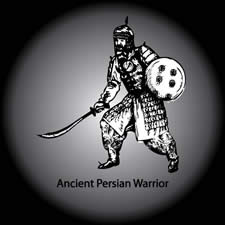
Weapons played a great role in the adaptation of martial arts. An example of ancient weaponry used in modern martial practices is the sickle-sword, which was created by the Sumerians around 2500 B.C. The present day version of the weapon is the famous broadsword. Additionally, this region contributed one of the most devastating weapons of the ancient world. A spin-off of the sickle-sword, the bronze socket axe had a narrowing point offering lethal blows capable of piercing bronze plate armor.
“History illustrates the contributions of various area cultures to the development of martial weapons in this region of the world. The Hittites were fierce and inventive warriors. They were the first to extract iron from ore. From this new metal they made weapons that were much stronger than the bronze and copper ones used by everyone else.” (Jacob M. Fellure p. 21) The Hittite’s changed the arsenal of the ancient world. Sword fighting places the sickle sword in the hands of an individual with martial combat training, a lethal combination of skill and weaponry. “The Hittite civilization was destroyed in 1200 B.C. The contributions the Hittites made is priceless, for the discoveries bled into the Babylonian and Neo-Babylonian empires. At some point, probably around 1200 B.C. Assyria acquired the skill of iron working, probably from a Hittite fleeing his conquered nation.” (Jacob M. Fellure p. 29)
